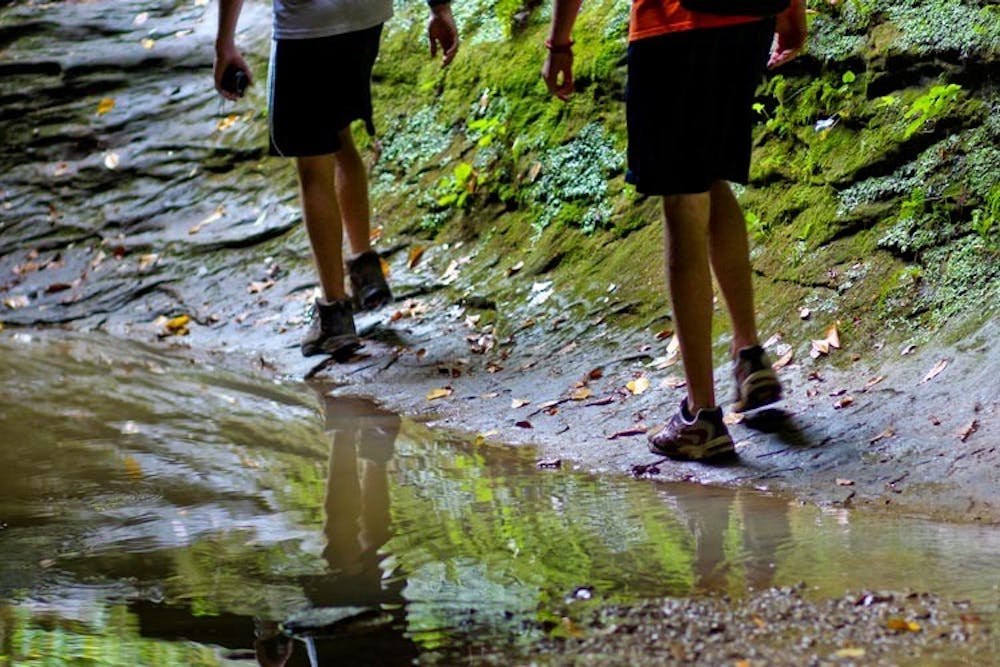As Ohio awkwardly begins the transition into spring, hikers face unique challenges to stay safe on historically dangerous trails in the area.
Eileen Corson, the Ohio Department of Natural Resources spokesperson, said the main dangers at Hocking Hills are rocky trails with ice and mud on them, making trails slippery.
Corson highly recommends wearing ice cleats during this time of year. Even when it is warm at the top of a gorge, it can be up to 20 degrees colder at the bottom, and, because of that, ice can remain on trails through April.
“We will get hikers that will come in shorts and T-shirts when it gets that warm, but down in the gorge that type of clothing becomes a recipe for hypothermia,” Corson said.
In 2013, two fatal falls occurred at the Hocking Hills State Park and one at the Hocking State Forest. There have been no deaths reported so far this year, but there have been two serious cliff accidents after hikers left the marked trail.
In 2012, there were no fatal falls in any state park, Corson said.
Matt Vosler, a graduate assistant who teaches courses at Ohio University including Wilderness Survival and Winter Wilderness Living Skills, said the biggest concern for hiking this time of year is exposure to the elements.
“It’s kind of a unique, fun time of year,” Vosler said. “But the number one killer of people in the outdoors is exposure.”
In addition to being cold down in the gorges, it also gets very cold at night, Vosler said. Hikers without layers may be in danger if they are out too late or if they got lost and do not make it back before the sun sets.
Corson said hikers should use the “rule of three,” which means go on a hike with three people, so if one person gets injured, the second person can stay with them and the third can get help.
Vosler said hikers should always bring water, a lifepak, a cell phone and an extra layer. Also, hikers should always tell someone where they are going and when to expect them to be back.
Dan Vorisek, OU’s director of Outdoor Pursuits, said hikers should always bring water and healthy foods to keep up their energy.
Although he stressed the importance of layers, Vorisek said big, heavy coats are not a good idea.
“If you can’t regulate your body temperature easily, you end up sweating a lot, which is wasted energy, and then when you stop walking if you’re sweating you tend to get chilled,” Vorisek said.
Hikers should start with a thin base layer, Vorisek said. The middle layer should be a fleece or a wool sweater or something similar. The top layer should be a thin windbreaker. Silk, synthetic underwear or wool are best to use. Other advice: have a hat and gloves and preferably waterproof boots and bring a backpack to put extra layers in if it gets too warm.
kd266009@ohiou.edu
@kdoran03






